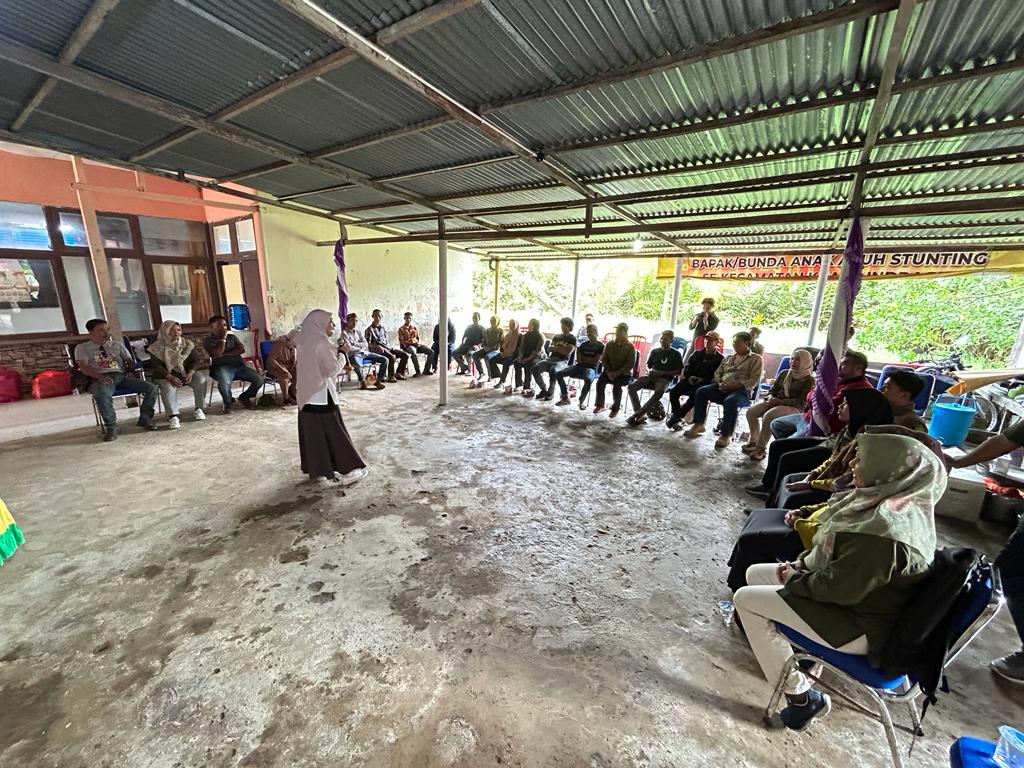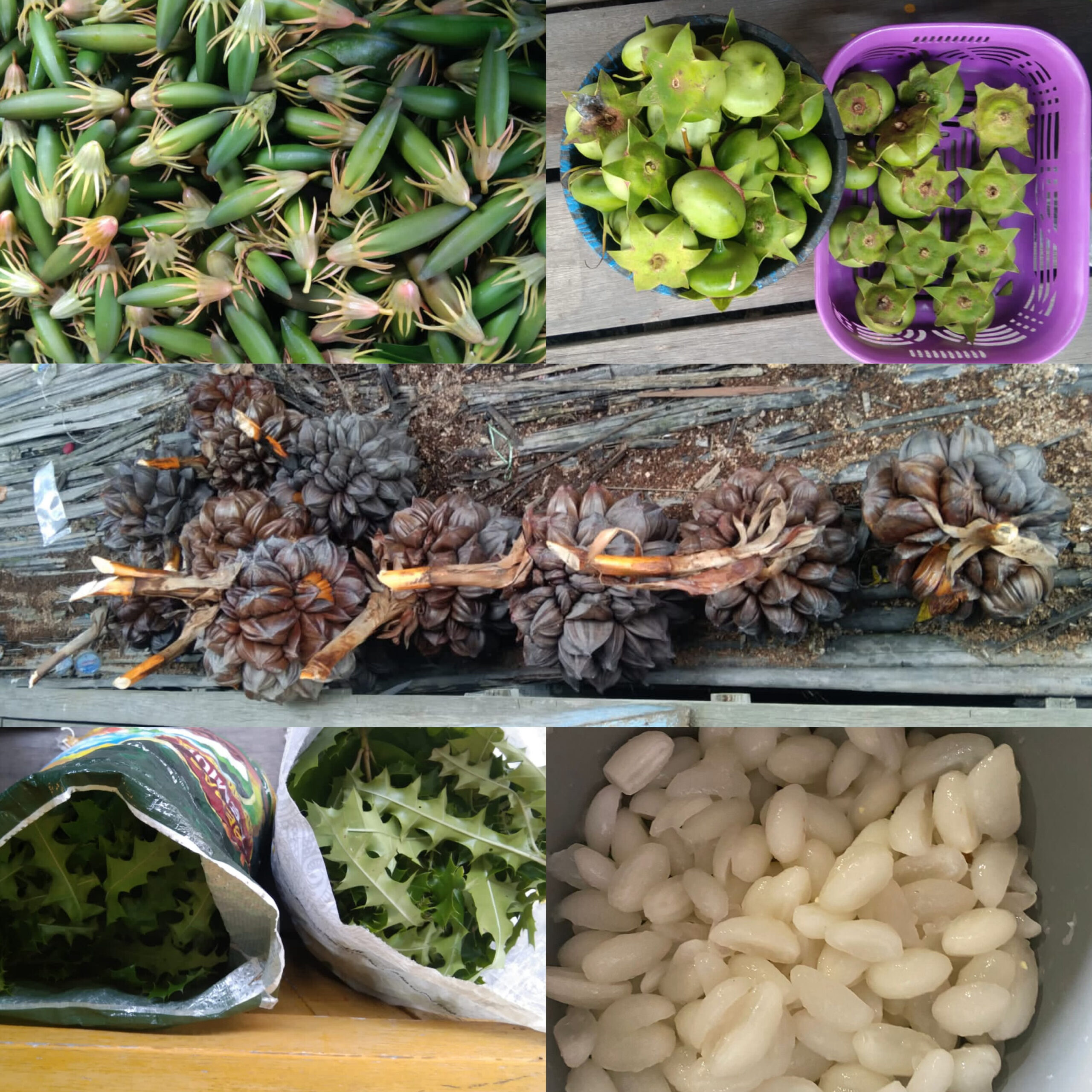Communities in Ingradiri Hilir regency, have created initiatives aiming to boost their livelihoods through various means. One such initiative is through the processing of mangrove materials into edible products. Many of these processing methods were learned through Blue Forest’s Mangrove NTFP (non-timber forest products) Processing training event.
This training, held in Sapat ward, Indragiri Hilir regency, located in southeastern Riau province, aimed to improve the capacity of local communities to take advantage of mangrove NTFPs and fisheries resources. The main participants were members of the Sapat ward community, as well as representatives of the Mandah Forest Management Unit (KPH- Kesatuan Pengelolaan Hutan) and teachers from the local high school. The training was facilitated by experienced Blue Forest team members Ratna Fadilah and Andi Darmawansyah.
 Bu Ratna explains the benefits and potential of mangrove ecosystems as a food source
Bu Ratna explains the benefits and potential of mangrove ecosystems as a food source
The emphasis on mangrove NTFPs is part of Blue Forests’ strategy to foster sustainable community mangrove management. Participants learned all about the wealth of food products that can be gathered and processed from Sapat ward’s mangroves, including flour from the tumu (Bruguiera sexangula), fruit tarts and candies from the fruit of the nipa palm (Nypa fruticans), jelly desserts colored with jeruju (Acanthus ilicifolius) leaf extract, brownies from tumu flour, sauces from mangrove clams (Polymesoda expansa), and jam from pedada (Sonneratia caseolaris) fruit.

 Examples of mangrove food products
Examples of mangrove food products
As a result of this training, many participants remarked that they felt they now had the necessary understanding of how to turn mangrove ingredients into high value food products. They also expressed their hope that processing mangrove products could become a viable alternative livelihood to empower their communities. Meanwhile, one participant, a local high school teacher, stated that the training was very helpful for increasing their understanding of mangrove ecosystems. The teacher communicated their enthusiasm for passing on the lessons and knowledge gained during the training to their students as part of the Local Traditions curriculum, which includes material related to management of natural resources in the Sapat ward area.
 Post-training group photo!
Post-training group photo!
